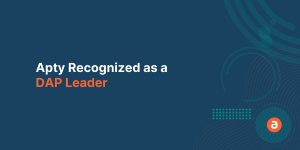The Employee training method you implement in your organization can be an absolute game-changer when it comes to increasing employee retention rate. According to PwC 1 in 3 employees leave their company within the first year.
Targeted training methods help to make your employee confident, efficient, motivated and productive. All of which help reduce employee turnover rate and increase overall proficiency.
Companies are always on the hunt for the perfect employee training method but it could be that they are chasing a mirage for there is no “perfect” training method after all. Each organization and its employees have different needs and demands which can only be satisfied by combining different training methods.
How to Choose the Right Workplace Training Method
There are different ways to train employees at your workplace. To choose the right workplace training method for your employees, ask yourself the following questions:
A. How many employees need to be trained?
People learn better in smaller groups. They learn best when they are given the freedom to choose the mode of learning and the time slots. If you’re dealing with a large group, break them into smaller groups and train them in different time slots.
B. What mode of training do my employees prefer?
Assess what resources you have available and define the type of training you will give to your employees. This blog discusses different training methods and techniques in the workplace below. It is recommended to segment your employees based on department, job function, etc and custom tailor training methods for each segment. The latest approach to employee training is using a digital adoption platform and it has proven to be highly effective.
C. What is the organization’s goal in training employees?
An organization usually conducts training for new employees (onboarding) or for upskilling existing employees. It can also occur when a new software is introduced to the workforce and everyone needs to be proficient with it. Whatever the reason is, define the goals for the training before choosing the method of training. A digital adoption platform is the best option for any of the above-mentioned goals.
D. Do you have the resources required to conduct training?
Training can take up a lot of resources – time, money, tools, trainers (if required), etc. Ensure that you have all the required resources to carry out the training before starting it. If your organizations cannot afford to waste time or money on training all of its employees, invest in smaller training initiatives. Apty digital adoption platform helps reduce employee training costs by 80%.
Why choosing a training method is important
Training is highly beneficial to the bottom line of your organization. It is just as important to choose the right training method. Your employees are not all the same and they may need different modes of learning to completely benefit from the training initiative.
Different departments in your organization may have different requirements from training and you must choose the right training method for each department. It is important to give employees the option to choose between different training tools and techniques that they are most comfortable with.
Top Employee Training Methods
Here are training techniques that might be useful for your organization:-
- Classroom Training
- Mentoring
- Experiential Training
- eLearning courses
- Gamification
- Social Learning
- In-app Guidance
- On the job training
- Video training
- Case study
- Group activities
1. Classroom Training
Instructor-Led Classroom training is one of the traditional forms of training. In 2019, approximately 40% of training was delivered in a classroom setup.
In classroom-style training, there is an instructor who generally is a subject matter expert.

They impart their knowledge to the employees and are there to answer any queries that may arise. It is similar to the format of a school or college where you are taught things by experts/trainers.
Advantages of classroom training:
- Employees can get answers immediately for any question.
- You get to interact with professionals who are highly knowledgeable and know what they are teaching.
- Useful for training difficult topics that need in-depth knowledge.
- Helpful for employees located in the same geographical location.
- Good for the new employees to learn everything from scratch.
Read more:- New employee training checklist for employees
Disadvantages of classroom Training:
- It is time-consuming and sometimes unnecessarily so, especially for topics that don’t need a formal training session.
- Not feasible if employees are working from different geographic locations.
- Time-consuming compared to other forms of training as the trainer is obligated to make sure every trainee is up to speed with the sessions. It affects the overall man-hours which otherwise could have been utilized for work.
- Not good for introvert employees or for people who are afraid to pose questions in public. As a result, the training becomes pointless as they don’t get to have their doubts clarified.
- Arranging training infrastructure, space, food, and accommodation is a costly affair, and ensuring that every employee attends the sessions is not practical.
- No means to measure the effectiveness of the training.
2. Mentoring
It is an effective way of training an employee for a particular job role. Generally, the mentor is a highly experienced professional from within the organization who guides the employees by personally examining their progress and evaluating work performance.

A mentor guides at each step of the learning path and clears the doubts of the mentee and enables them to excel in their career.
Advantages of Mentorship:
- A mentee can pose questions as and when they want.
- The mentor shares their knowledge and experience which enables the mentee to be prepared for future challenges.
- In an ideal scenario, a mentee is comfortable with the mentor which makes things easy for the employee need not hesitate to ask anything.
- An employee learns by seeing their mentor do things in real-time.
Disadvantages of Mentorship:
- Mentorship is time-consuming as it requires a senior member of the organization to mentor the other employees. In the short-term, this could impact overall productivity.
- The relationship between the mentor and mentee very much decides how the knowledge is being shared. If they have sour relations, chances are you are losing tons of money on a lost cause.
- It is a long-term process and might not be beneficial in the short-run.
3. Experiential Training
Experiential training helps employees to learn about their job in a virtual environment. One of the traditional types of experiential training is Role-Play, where hypothetical scenarios are enacted, usually led by the instructor or the facilitator. Both the instructor and the employee act in this space, giving a broad idea to the learner about scenarios that they might encounter in their job and also learn how to do their job.
But it is only limited to straight forward topics. Complex topics cannot be taught via the Role-play method.

In recent times we have seen technologies like VR (Virtual Reality) & AR (Augmented Reality) have paved paths to the new form of training and teaching complex topics using it is possible.
VR is an experiential form of training where employees are immersed in the virtual 3D world to experience real-time situations. The learner can participate in new scenarios and explore them without worrying about the consequences.
According to Trainingmag in 2019, the content delivery using VR & AR was at 9% and 6% respectively. Many organizations are exploring this form of training as the value generated out of it is more compared to other traditional means.
Advantages of interactive training:
- Participants learn in real-time.
- Modern Interactive training like VR is a form of on-demand training that an employee can take as per their convenience.
- By applying their skills and knowledge in a virtual-environment, employees can learn new things.
- Useful for a job like manufacturing maintenance, medical surgeries, and managing hazardous waste that demands hands-on training and a high level of proficiency.
- It is a risk-free environment with no consequence.
- The engagement rate is very high compared to other forms of training as it demands the complete attention of the participant.
- The retention rate in the experiential style of training is high.
Disadvantages of interactive training:
- If the virtual environment is not created for the employee’s job role then the whole setup could turn out to be a failure.
- It needs continuous feedback to make it better and effective.
- A lot of time is consumed in maintenance.
- It is an expensive affair that is also time-intensive.
4. eLearning Courses
eLearning training is the best training delivery method where the course is delivered via digital means. It consists of pre-recorded videos, assignments, and quizzes. The learner can access the course from any geographical location provided they have internet connectivity and a device to access it.

These are self-paced courses that an employee can access at a time best suitable for them.
In 2017, 77% of the corporates used eLearning courses as a primary form of training and according to Techjury by 2020, 97% of the corporates will use eLearning courses to train their employees.
Advantages of eLearning training method:
- Higher retention rates – employees can access the course at a time that suits them best and this gives them the control to manage their learning path.
- Irrespective of geographic location, a large number of people can be trained.
- It is cost-effective as the organization saves a lot of money on trainers, and saves a considerable amount of employees’ time.
- If the instructional design is great then chances are that the eLearning course is immersive which could lead to a better engagement rate.
- It is easily scalable compared to other traditional forms of training.
Disadvantages of eLearning training method:
- The in-person guidance and human touch are missing.
- If the instructional design is not structured properly then chances are your investment is wasted.
- Investment in authoring tools is required.
- The value cannot be generated out of eLearning immediately.
3. Gamification
Gamification makes learning interesting and fun. Employees are pushed through challenges and hurdles that they have to solve and earn their rewards or badges.
It is a set up to influence the employees’ behavior and attitude in a positive manner. Gamification could consist of quizzes, puzzles, and hypothetical scenarios.

On completion of each task, the participant earns a badge and the next task becomes more difficult. It creates a sense of healthy competition amongst the participants and pushes each one of them to do better than the other. Their achievement is tracked via the leader board.
It is like playing Mario in a professional setup. The ultimate aim is to make learning exciting.
Advantages of Gamification:
- High engagement rate since it is a fun type of training method.
- Great for the long-term results.
- Healthy competition pushes employees want to do better than the other one.
Disadvantages of Gamification:
- It is a time-intensive training technique as creating and structuring gamification modules consume a lot of time.
- Employees can be hooked to this all day long to gain more badges which could eventually affect work.
6. Social Learning
Social learning is not a new method, it’s been in the picture since time unknown. In this style of training, people interact and communicate with each other. People observe, imitate, and understand the other person and try to incorporate their learning out of this into their jobs.

In 2019, approximately 5% of the people were trained via social channels.
Social media channels such as Facebook and LinkedIn can be used to exchange knowledge with one another. You can create a closed group for your employees and ask them to share relevant resources, documents, and videos.
All of this will ensure that all your employees are on the same page. Platforms like LXP (Learning experience platform) can be used by the L&D department to share knowledge internally within the organization. If a manager feels like creating a course, he or she can create it and post it on this platform. Their team members can access it and rate it which would be helpful for anyone who is thinking of taking this course.
Further, they can share their opinion and other resources which paves the way for discussion and social interaction within the company.
Advantages of social interaction:
- Learners can ask questions at any point in time.
- A community can be created that celebrates knowledge by sharing it.
- A sense of collaboration is instilled within the employees over a period of time.
- By teaching others, one can become more knowledgeable.
- Cost-effective training method.
Disadvantages of social interaction:
- It is difficult to structure the process of social learning.
- The impact of social-learning cannot be measured.
- Cannot moderate the quality of content that is being shared.
- Misinformation can take place as everyone is a teacher and learner in this environment.
7. In-app Training
In-app training is a modern training method where employees are trained within the application they are using and they learn by taking action in real-time.

Here is how it works:
- The employee is guided seamlessly from one step to the other using a walkthrough.
- The employee receives in-app announcements and notifications for any updates and changes within the application. So, the chance of missing any update is nil.
- The in-app help-deck acts as a repository of information and resources. It contains, pdf, ppt, knowledgebase documents, videos, and walkthroughs.
Advantages of in-app training method:
- Employees can be trained quickly on any web-based application.
- Value can be realized immediately.
- A cost-effective solution as employees learn to use the application by performing the task within the software in real-time.
- Easy access to relevant documents, videos, knowledge-base link, and walkthroughs.
- Dependency is reduced drastically which makes employees confident and productive.
- The walkthroughs can be created in a matter of a few minutes to hours based on each job-function.
- Saves a lot of time for the development team and employees as in-app training workflows can be created after understanding each employee’s behavior with the application.
- The impact of this type of training could be measured by using the analytics tool that comes with it.
Disadvantages of in-app training method:
- Lesser human interaction.
- Asking questions face-to-face is not possible in this method.
8. On the job training
On-the-job training is a hands-on method of training where employees are provided the knowledge and skills to perform a specific job within the workplace itself. Employees will need to practically apply what they are taught during the training.
Advantages of on-the-job training method:
- It is directly in the context of the job
- Employees learn by experience
- It is often informal and keeps employees engaged
- Less expensive
- Learners are highly motivated
- Doesn’t require offline or virtual classrooms
Disadvantages of on-the-job training method:
- The person conducting the training may not be skilled enough
- Poorly conducted on-the-job training may cause confusion
- It is a disorganized method of training
9. Video training
In this method, employees are provided educational material in video format so they learn the knowledge and skills required to perform their job.
Advantages of video training:
- Saves money and resources
- Works great for auditory and visual learners
- Video format is more engaging and increases knowledge retention
- Can be accesses anywhere and at anytime
Disadvantages of video training:
- You have to define situations for which the video is to be created. Employees will not get any guidance for any situation that are not defined by the trainee.
- Feedback from the learners is limited
10. Case study
A case study is an in-depth, detailed examination of a particular case within a real-world context. In case study training methods, employees are provided case studies which provide descriptive situations which stimulate trainees to make decisions in such situations.
Advantages of case study method:
- Provides rich and detailed information
- It simplifies complex concepts
- Exposes learners to real-life situations which is impossible with other methods
- It improves analytical thinking, communication, tolerance of differing views on the same topic, and the ability to defend one’s opinion about a topic.
Disadvantages of case study method:
- There might be researcher bias influencing the study
- It is time-consuming and expensive
- Might be difficult to find an appropriate case study to suit all your learners
- There is more than one solution to a problem and a case study usually only provides one solution.
11. Group activities
Group work or group activity is a problem-based method of training which focuses on participants and the importance of peer-to-peer interaction and communication.
Advantages of group activity method:
- Develops responsibility, leadership skills, team skills, and group dynamic
- Provides learners social feedback
- Improves interaction and communication of team members
Disadvantages of group activity method:
- Does not pass on knowledge effectively
- Team members might forget the main goal of the training method and focus on less important details
- Requires additional training space
- Effectiveness is low for large groups
Which is the best training method for employees?
Every training method has some benefits associated with it. It depends on who you are training and for what role or job function.
Each employee is different and the way they learn is also different but having an effective employee training method in place is essential.
Some learn effectively via visual medium while others learn it better by reading, hearing, and doing things.
It is always better to have a combination of training techniques to reap maximum benefit from each one of them.
It is necessary to have a training format that compliments the other and makes up for the cons that the other training format may have.
Be open to feedback and ask your employees about the training method that is been implemented. Try to work upon it and improve the overall learning path.
But with the world increasingly becoming remote and virtual workplaces gaining more and more popularity, it is wise to invest in an in-app training solution as it guarantees high-impact training that your employees can independently undergo, anywhere, anytime.
This also helps you cut down on training costs and increase productivity as the on-screen guidance will provide continued assistance to your employees until they fully adopt your software.
FAQs on Employee Training
1. What is the best method of training?
There is no one best way to train your employees. The best option would be to use a combination of training methods and provide the option to your employees to choose their preferred method. A Digital Adoption Platform lets you provide multiple forms of training to your employees.
2. What are the different levels of training?
The four levels of training effectiveness according to Kirkpatrick’s Training Evaluation Model are:
- Level 1: Reaction – Whether the learners react to the training positively or negatively
- Level 2: Learning – What learners have or haven’t learnt
- Level 3: Behavior – How the learner applies the training
- Level 4: Results – Whether or not you are seeing the expected outcomes from the training
3. How do you identify training needs?
- Define expected outcomes from training
- Identify the knowledge and skills needed to meet these outcomes
- Analyze employees’ knowledge and skills
- Get feedback from employees and managers













